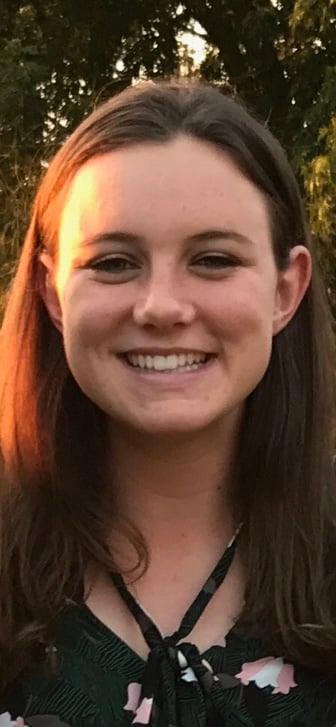The cell is the fundamental unit of life. Multicellular organisms are composed of many cells; in the case of human beings, trillions of them! But every human being arises from one single cell. To form a body composed of so many cells, cells must replicate themselves. To do so – they undergo a program of growth and division.
The eukaryotic cell cycle
This program of growth and division is called the cell cycle. The cell cycle is composed of 4 phases.
G1 phase (growth)
The cell cycle begins with the birth of a cell. Each cell is born into a phase called G1 (“G” stands for “gap”; “1” indicates the first gap phase). This is the longest phase of the cell cycle and it is dedicated to growth. In this phase, a cell synthesizes its component biomolecules – mostly proteins - and grows the most in size.
S phase (DNA synthesis)
After G1 phase comes S phase (“S” stands for “synthesis” – of DNA). In S phase, cells replicate the DNA in their nucleus. In human cells, this means that a duplicate copy of each of 23 chromosomes is made, to make 46 pairs of chromosomes. This duplicate copy of the cell’s DNA will later be required to make another, duplicate cell.
G2 phase (mitosis preparation)
The next phase of the cell cycle is called G2 (the second “gap” phase). G2 phase is when the cell prepares for the next phase, mitosis. For most eukaryotic cells that means making and arranging microtubules, which are the scaffolding that the cell will use to attach to chromosomes and pull them apart in opposite directions during mitosis.
M phase (mitosis)
The last phase of the eukaryotic cell cycle is M phase (“M” stands for “mitosis”). Mitosis is probably the most complicated phase of the cell cycle and is, deservedly, covered in other blog posts. Put simply, mitosis is the process in which duplicate chromosomes in the nucleus of the existing cell are pulled apart from one another to generate two nuclei, each with a single copy of each chromosome. Cytokinesis quickly follows mitosis and is the splitting of the continuous cytoplasm of the existing and newly-forming cell into two separate cells.
Checkpoints
There are points in the cell cycle, called checkpoints, at which the cycle can be stopped. There are different types of checkpoints, but each serves to ensure that the steps of the previous phase of the cell cycle, and required for the next phase, have occurred. If they have not, the checkpoint halts the cell cycle until the steps required are properly executed. Specialized types of eukaryotic cells can have unique and additional checkpoints. The checkpoints summarized below are shared amongst most all eukaryotic cells.
G1 checkpoint
Returning to the cell cycle at its beginning phase, G1, the first checkpoint a cell encounters is at the transition between G1 and S phases. At this checkpoint, two major requirements are checked: 1) has the cell grown sufficiently in size, and has it accumulated enough nutrients to survive the rest of the cell cycle? and 2) is the existing DNA undamaged? If both conditions are met, the cell proceeds into S phase. If not, the checkpoint triggers a set of molecular responses inside the cell that a) prevent the cell from proceeding into S phase and b) attempt to correct the problem.
G2 checkpoint
After the cell passes the G1 checkpoint into S phase, and replicates its DNA, it encounters the G2 checkpoint, at the transition between G2 and M phases. This checkpoint again checks that the cell’s DNA is undamaged and, unique to this checkpoint, also checks: was the DNA replicated completely? If both conditions are met, the cell proceed into mitosis. If not, another set of molecular responses is triggered both preventing the cell from proceeding to M phase and attempting to correct the problem.
Spindle checkpoint
After the cell passes the G2 checkpoint, it enters M phase. There is one last checkpoint in the eukaryotic cell cycle called the spindle assembly checkpoint. This checkpoint occurs at a point during M phase. The spindle checkpoint checks that the cell has synthesized the microtubule machinery required to segregate its chromosomes (called the mitotic spindle). It also checks that these microtubules are properly attached to the chromosomes in a way that will direct them to opposite poles, and into separate cells, when the nucleus and cell divide down the middle. Once these conditions are met – voilà! – the cell completes mitosis and cytokinesis, and the cycle begins again – this time in 2 cells.
A final note on checkpoints
Checkpoints occur at strategic points in the cell cycle, after which a set of irreversible events take place. For example, after the G1 checkpoint, the cell will not uptake many nutrients in S phase, but it will need them to synthesize new DNA. The next checkpoint does not occur until the transition between G2 and M phases. So, once begun, the coordinated steps of DNA synthesis that require these nutrients cannot be stopped. Thus, it’s important for the cell to ensure that it has the nutrients to make it through S phase, and at least to the next checkpoint, so that DNA synthesis isn’t harmed by their absence.


Comments